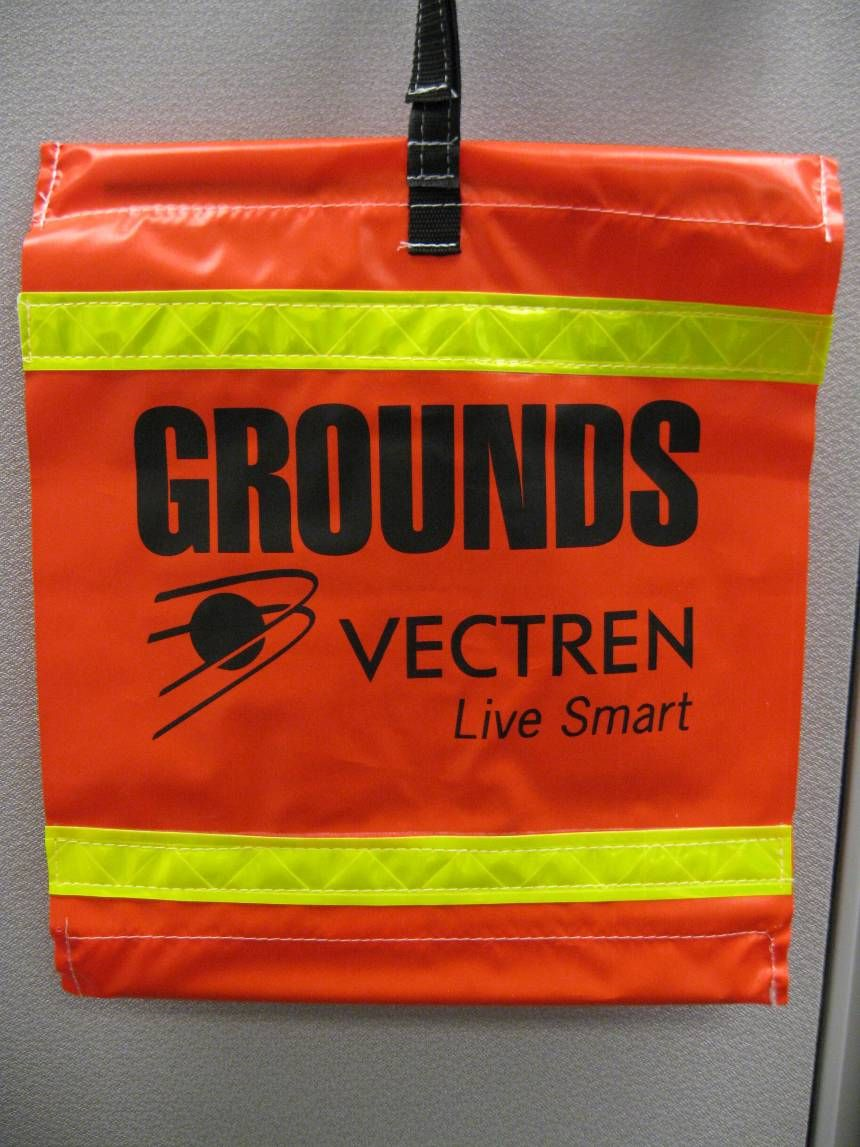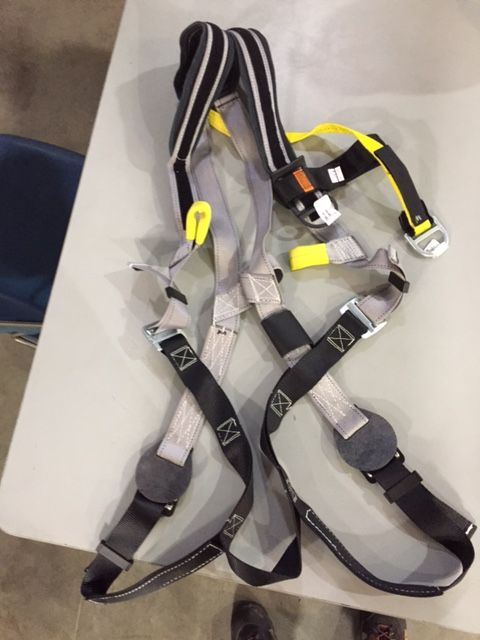Information
-
Site conducted
-
Division/Region
-
Audit Title (Ex. Mo. day. year. Meter change out field visit)
-
Client / Site
-
Conducted on
-
Audit Conducted By:
- Roy Adams
- Sierra Buse
- Ben Polk
- Tyler Walker
- Bob Weis
- Shaun Moss
- Claudia Luna
- Jon Nixon
- Mark Silva
- Trey Steiner
- James Frierson
- Craig Verret
- Darla Alexander
- James Cagle
- Kathryn Carmichael
- Donna Carroll
- Stephen Garlington
- Braulio Huerta
- Roger Krenek
- Patricia Matthew
- Steve Montgomery
- Ronald Morgan
- Marguerite Porsch
- Brett Richardson
- Brendan Riedel
- Dan Robinson
- Richard Robinson
- Kevin Sheffield
- Leo Skiba
- Wayland Smith
- Bradley Stoker
- James Varghese
- Jamel Wilson
- Gregory Wise
- Dawn Zapp
- Jim Duncan
- Cody Preuss
- Ryan Friesz
Audit Overview
-
Region/Division
-
Contractor
-
Regional Safety Specialist
- Roy Adams
- Sierra Buse
- Ben Polk
- Tyler Walker
- Bob Weis
- Shaun Moss
- Claudia Luna
- Jon Nixon
- Mark Silva
- Trey Steiner
- James Frierson
- Craig Verret
- Darla Alexander
- James Cagle
- Kathryn Carmichael
- Donna Carroll
- Stephen Garlington
- Braulio Huerta
- Roger Krenek
- Patricia Matthew
- Steve Montgomery
- Ronald Morgan
- Marguerite Porsch
- Brett Richardson
- Brendan Riedel
- Dan Robinson
- Richard Robinson
- Kevin Sheffield
- Leo Skiba
- Wayland Smith
- Bradley Stoker
- James Varghese
- Jamel Wilson
- Gregory Wise
- Dawn Zapp
- Jim Duncan
- Cody Preuss
- Ryan Friesz
Worksite Location
-
Add location
-
Date and Time of Audit
Jobsite safety & Housekeeping
-
Job briefing is completed and on the job? (1910.269)(D)
-
Is an Inspector on site?
-
Name of Inspector on site.
-
General Housekeeping is neat and orderly? [1926.25]
-
Wall openings & floor holes are covered or guarded? [1910.23(a)&(b)]
-
Concrete work? Silica dust training documented for all? Respirators? [1910.134]
-
Is there a first aid kit available on site? And appropriately stocked and inspected?
-
If scaffolding is present on site, is a Competent Person on site? [1926.451(f)]
-
Are proper body mechanics (ergonomics) being demonstrated? (i.e. not jumping out of truck, proper lifting, etc.)
-
If a crew truck is onsite is there an AED present?
-
Is the bin door marked with AED sticker
-
Are there any further comments for this section?
Click add for each issue or observation
-
Describe issue or observation
-
-
Add media
Electric Field Safety (general)
-
Select for Electric Field Crews
-
Could an additional bucket truck have been utilized on this job?
-
Did the crew utilize a qualified observer?
-
Was DSO/TSO aware of your work location
-
Do you know the circuit you are working on?
-
Do you know the nearest clearing device feeding the job site?
-
Did you utilize re-closer relay protection (one shot protection)?
-
Was any required switching protection pre-scheduled with DSO/TSO?
-
Did your Supervisor discuss any traffic control issues with you prior to assigning this job?
-
Were any significant outages required/arranged for you in advance?
-
Were you provided with any information concerning additional tools or equipment needs?
Electrical Operations
-
Electrical Safety
-
Portable generators are grounded per NEC requirements? [1926.404(f)(2)]
-
LO/TO is being used for appropriate tasks? [1910.147]
-
Electrical cords inspected & have all prongs intact? [1926.404(f)(8)]
-
GFCI’s used for all portable electrical hand tools? [1926.404]
-
Light bulbs for illumination Class I Div. I per NEC requirements? [1926.407(b)]
-
For extension cords: hard usage cord includes three-wire cords marked S, ST, SO, STO, SJ, SJO, SJT, or SJTO [1926.405(5)(a)(2)]
-
Electrical power tools are double insulated or grounded? [1926.302(a)]
-
Are there any further comments for this section?
Click add for each issue or observation
-
Describe issue or observation
-
-
Add media
Gaseous Atmosphere
-
Check if there is gaseous atmospheres present on the job site
-
Employees wearing appropriate flash gear? [Per Company Policies]
-
Non-entry rescue equipment worn with SCBAs? [Per Company Policies]
-
SCBAs used if atmosphere requires? [Per Company Policies]
-
Atmosphere monitored using CGI or O2 monitor? [Per Company Policies]
-
Fire extinguisher located in immediate work area? [Per Company Policies]
-
Illumination adequate? [1926.56]
-
Employee on fire watch? [Per Company Policies]
-
Are there any further comments for this section?
Click add for each issue or observation
-
Describe issue or observation
-
-
Add media
Trenching and Excavation
-
Check if there is trenching/excavation on site?
-
Have proper locates been secured and annotated on job briefing form?
-
Excavation-ladders if > 4ft deep? Extend 3 ft? 50 ft apart? [1926.651(c)(2)]
-
Sloping, shoring evaluated? [1926.6562(f)]
-
Excavation – protection from cave-ins for > 5 ft? [1926.652(a)]
-
Is tabulated data available onsite,
-
Daily inspection? [1926.651(k)]
-
Spoil or equipment placed 2 ft. away from edge of excavation? [1926.651(j) (2)]]
-
Is excavation equipment onsite?
-
Are equipment outriggers deployed and secure properly?
-
If being operated, is driver wearing seatbelt?
-
Are crew members communicating with operator properly? (i.e. Hand signals, etc.)
-
Are there any further comments for this section?
Click add for each issue or observation
-
Describe issue or observation
-
-
Add media
Personal Protective Equipment (general)
-
Check if PPE is reviewed during this audit
-
Safety glasses and/or goggles available & being used? [1926.102]
-
(VECTREN) Do employees who require prescription glasses use Essilor prescription glasses?
-
Hand protection used/worn as required? [1926.951]
-
Foot protection worn as required? [1926.96]
-
Hearing protection worn where required? [1926.101]
-
Hard hats worn on construction site as required? [1926.100]
-
Crews wearing appropriate ANSI Class II apparel if required? [1926.201]
-
Are there any further comments for this section?
Click add for each issue or observation
-
Describe issue or observation
-
-
Add media
Ladders
-
Check if ladders are present on site
-
Ladders are safe and inspected as appropriate? [1926.1053(b)(15)]
-
Stair rails - for 30” change in elevation or 4 risers? [1926.1052(c)(1)]
-
Stairs or ladder provided for access points > 19” high? [1926.1051(a)]
-
Extension & straight ladders extend 3’ beyond landing? [1926.1053(b)(1)]
-
Stepladders are only used in open position? [1926.1053(b)(4)]
-
Are there any further comments for this section?
Click add for each issue or observation
-
Describe issue or observation
-
-
Add media
Hand & Power Tools
-
Check if Hand and/or Power tools are present and in use
-
Grinders (portable & stationary) have guards in place? [1926.300(b)]
-
Impact style air tools have safety clips/retainers installed? [1926.302(b)(2)]
-
Portable circular saws equipped with protective guards? [1926.304(d)]
-
Unsafe hand tools are prohibited? [1926.301(a)]
-
Pneumatic power tools have hoses secured? [1926.302(b)(1)]
-
Impact tools, hammers kept free of splinters/mushrooms? [1926.301(c)]
-
Impact style air tools have safety clips/retainers installed? [1926.302(b)(2)]
-
Are there any further comments for this section?
Click add for each issue or observation
-
Describe issue or observation
-
-
Add media
Workzone
-
Check if Work-zone set-up applies to this audit
-
Signs in good condition/non-conflicting/clear view/proper position? [1926 Subpart G]
-
Message sign - appropriate message/proper position? [1926 Subpart G]
-
Arrow panel - auto dim/bulbs out/proper placement? [1926 Subpart G]
-
TCDs in good condition/proper number and spacing/proper taper length? [1926 Subpart G]
-
Flaggers certified/visible/properly positioned/ flagging correctly/advanced warning signs? [1926 Subpart G]
-
Misc. - adequate buffer/material and equipment properly stored/work area protected/evidence of accidents? [1926 Subpart G]
-
Are there any further comments for this section?
Click add for each issue or observation
-
Describe issue or observation
-
-
Add media
Compressed Gasses
-
Check if Compressed gases are present and/or used on site
-
Compressed gas cylinders stored secured & upright? [1926.350(a)]
-
Oxygen/acetylene torch units have flash back arrestors? [1926.350(g)]
-
Are there any further comments for this section?
Click add for each issue or observation
-
Describe issue or observation
-
-
Add media
Jobsite Emergency Action Plans
-
Check for Emergency Action Plans
-
Is an Emergency Action Plan (EAP) in place for this Job Site?
-
EAP in place if a leak developed?
-
Is there a means for communication established in case of an emergency?
-
Do drivers have necessary CDL licenses where applicable?
-
Are there any further comments for this section?
Click add for each issue or observation
-
Describe issue or observation
-
-
Add media
Electric Operations Safety
-
Select for Electric Operations Safety
-
Personal Protective Equipment
-
Safety glasses and/or goggles available and being used?
-
1926.102(a)
General requirements.
1926.102(a)(1)
The employer shall ensure that each affected employee uses appropriate eye or face protection when exposed to eye or face hazards from flying particles, molten metal, liquid chemicals, acids or caustic liquids, chemical gases or vapors, or potentially injurious light radiation.
1926.102(a)(2)
The employer shall ensure that each affected employee uses eye protection that provides side protection when there is a hazard from flying objects. Detachable side protectors (e.g. clip-on or slide-on side shields) meeting the pertinent requirements of this section are acceptable.
1926.102(a)(3)
The employer shall ensure that each affected employee who wears prescription lenses while engaged in operations that involve eye hazards wears eye protection that incorporates the prescription in its design, or wears eye protection that can be worn over the prescription lenses without disturbing the proper position of the prescription lenses or the protective lenses.
https://www.osha.gov/pls/oshaweb/owadisp.show_document?p_table=STANDARDS&p_id=10665 -
Hand protection used/worn as required?
-
1910.138(a)
General requirements. Employers shall select and require employees to use appropriate hand protection when employees' hands are exposed to hazards such as those from skin absorption of harmful substances; severe cuts or lacerations; severe abrasions; punctures; chemical burns; thermal burns; and harmful temperature extremes.
1910.138(b)
Selection. Employers shall base the selection of the appropriate hand protection on an evaluation of the performance characteristics of the hand protection relative to the task(s) to be performed, conditions present, duration of use, and the hazards and potential hazards identified.
https://www.osha.gov/pls/oshaweb/owadisp.show_document?p_table=STANDARDS&p_id=9788 -
Foot protection worn as required?
-
Safety-toe footwear for employees shall meet the requirements and specifications in American National Standard for Men's Safety-Toe Footwear, Z41.1-1967.
[58 FR 35152; June 30, 1993]
https://www.osha.gov/pls/oshaweb/owadisp.show_document?p_table=STANDARDS&p_id=10659 -
Hearing protection worn where required?
-
1926.101(a)
Wherever it is not feasible to reduce the noise levels or duration of exposures to those specified in Table D-2, Permissible Noise Exposures, in 1926.52, ear protective devices shall be provided and used.
1926.101(b)
Ear protective devices inserted in the ear shall be fitted or determined individually by competent persons.
1926.101(c)
Plain cotton is not an acceptable protective device.
TABLE D-2 - PERMISSIBLE NOISE EXPOSURES
__________________________________________________
| Sound level
Duration per day,hours | dBA slow response
_________________________________________________
8..................................| 90
6..................................| 92
4..................................| 95
3..................................| 97
2..................................| 100
1 1/2............................| 102
1..................................| 105
1/2...............................| 110
1/4 or less...................| 115
_________________________________________________
https://www.osha.gov/pls/oshaweb/owadisp.show_document?p_table=STANDARDS&p_id=10664 -
Hard hats worn on construction site as required?
-
1926.100(a)
Employees working in areas where there is a possible danger of head injury from impact, or from falling or flying objects, or from electrical shock and burns, shall be protected by protective helmets.
1926.100(b)
Criteria for head protection.
1926.100(b)(1)
The employer must provide each employee with head protection that meets the specifications contained in any of the following consensus standards:
1926.100(b)(1)(i)
American National Standards Institute (ANSI) Z89.1-2009, "American National Standard for Industrial Head Protection," incorporated by reference in §1926.6;
1926.100(b)(1)(ii)
American National Standards Institute (ANSI) Z89.1-2003, "American National Standard for Industrial Head Protection," incorporated by reference in §1926.6; or
1926.100(b)(1)(iii)
American National Standards Institute (ANSI) Z89.1-1997, "American National Standard for Personnel Protection-Protective Headwear for Industrial Workers-Requirements," incorporated by reference in §1926.6.
1926.100(b)(2)
The employer must ensure that the head protection provided for each employee exposed to high-voltage electric shock and burns also meets the specifications contained in Section 9.7 ("Electrical Insulation") of any of the consensus standards identified in paragraph (b)(1) of this section.
1926.100(b)(3)
OSHA will deem any head protection device that the employer demonstrates is at least as effective as a head protection device constructed in accordance with one of the consensus standards identified in paragraph (b)(1) of this section to be in compliance with the requirements of this section.
[77 FR 37600, June 22, 2012; 77 FR 42988, July 23, 2012]
https://www.osha.gov/pls/oshaweb/owadisp.show_document?p_table=STANDARDS&p_id=10663 -
Crews wearing appropriate ANSI Class II apparel if required?
-
1926.201(a)
Flaggers. Signaling by flaggers and the use of flaggers, including warning garments worn by flaggers, shall conform to Part VI of the Manual on Uniform Traffic Control Devices (1988 Edition, Revision 3, or the Millennium Edition), incorporated by reference in Sec. 1926.6.
1926.201(b)
Crane and hoist signals. Regulations for crane and hoist signaling will be found in applicable American National Standards Institute standards.
https://www.osha.gov/pls/oshaweb/owadisp.show_document?p_table=STANDARDS&p_id=10682 -
1926.201 interpretation
https://www.osha.gov/pls/oshaweb/owadisp.show_document?p_table=INTERPRETATIONS&p_id=27155 -
Rubber Goods
-
Is any employee working with in the MAD distances listed below (consider tools and equipment that extend from the employee/work location in the MAD): <br>VECTREN Minimum Approach Distance 300V and less <br>-Avoid Contact Over 300V to 600V = 1 Foot <br> -Over -600V to 15KV = 3 Feet <br> -Over 16 kV to 69 KV =4 Feet <br> -Over 70KV to 169KV =6 Feet <br>-Over 170KV to 345kV =13 Feet<br> -Over 500 KV to 800 KV =26 Feet
-
1910.269(l)(3)(i)
The employer shall establish minimum approach distances no less than the distances computed by Table R-3 for ac systems or Table R-8 for dc systems. -
Are the rubber goods stored and handled properly?
-
1910.269(l)(3)(iii)
The employer shall ensure that no employee approaches or takes any conductive object closer to exposed energized parts than the employer's established minimum approach distance, unless:
1910.269(l)(3)(iii)(A)
The employee is insulated from the energized part (rubber insulating gloves or rubber insulating gloves and sleeves worn in accordance with paragraph (l)(4) of this section constitutes insulation of the employee from the energized part upon which the employee is working provided that the employee has control of the part in a manner sufficient to prevent exposure to uninsulated portions of the employee's body), or
1910.269(l)(3)(iii)(B)
The energized part is insulated from the employee and from any other conductive object at a different potential, or
1910.269(l)(3)(iii)(C)
The employee is insulated from any other exposed conductive object in accordance with the requirements for live-line barehand work in paragraph (q)(3) of this section. -
Are all second points of contact adequately covered by rubber goods?
-
1910.269(l)(3)(iii)
The employer shall ensure that no employee approaches or takes any conductive object closer to exposed energized parts than the employer's established minimum approach distance, unless:
1910.269(l)(3)(iii)(A)
The employee is insulated from the energized part (rubber insulating gloves or rubber insulating gloves and sleeves worn in accordance with paragraph (l)(4) of this section constitutes insulation of the employee from the energized part upon which the employee is working provided that the employee has control of the part in a manner sufficient to prevent exposure to uninsulated portions of the employee's body), or
1910.269(l)(3)(iii)(B)
The energized part is insulated from the employee and from any other conductive object at a different potential, or
1910.269(l)(3)(iii)(C)
The employee is insulated from any other exposed conductive object in accordance with the requirements for live-line barehand work in paragraph (q)(3) of this section. -
Have rubber gloves been inspected annually and stamped accordingly?
-
Were rubber gloves/sleeves/booties worn while setting a pole near energized primary?
-
Switching
-
Were lines or equipment switched out of service and visual opens established?
-
1910.269(m)(3)
Deenergizing lines and equipment.
1910.269(m)(3)(i)
The employee that the employer designates pursuant to paragraph (m)(2) of this section as being in charge of the clearance shall make a request of the system operator to deenergize the particular section of line or equipment. The designated employee becomes the employee in charge (as this term is used in paragraph (m)(3) of this section) and is responsible for the clearance.
1910.269(m)(3)(ii)
The employer shall ensure that all switches, disconnectors, jumpers, taps, and other means through which known sources of electric energy may be supplied to the particular lines and equipment to be deenergized are open. The employer shall render such means inoperable, unless its design does not so permit, and then ensure that such means are tagged to indicate that employees are at work.
1910.269(m)(3)(iii)
The employer shall ensure that automatically and remotely controlled switches that could cause the opened disconnecting means to close are also tagged at the points of control. The employer shall render the automatic or remote control feature inoperable, unless its design does not so permit.
1910.269(m)(3)(iv)
The employer need not use the tags mentioned in paragraphs (m)(3)(ii) and (m)(3)(iii) of this section on a network protector for work on the primary feeder for the network protector's associated network transformer when the employer can demonstrate all of the following conditions:
1910.269(m)(3)(iv)(A)
Every network protector is maintained so that it will immediately trip open if closed when a primary conductor is deenergized;
1910.269(m)(3)(iv)(B)
Employees cannot manually place any network protector in a closed position without the use of tools, and any manual override position is blocked, locked, or otherwise disabled; and
1910.269(m)(3)(iv)(C)
The employer has procedures for manually overriding any network protector that incorporate provisions for determining, before anyone places a network protector in a closed position, that: The line connected to the network protector is not deenergized for the protection of any employee working on the line; and (if the line connected to the network protector is not deenergized for the protection of any employee working on the line) the primary conductors for the network protector are energized.
1910.269(m)(3)(v)
Tags shall prohibit operation of the disconnecting means and shall indicate that employees are at work.
1910.269(m)(3)(vi)
After the applicable requirements in paragraphs (m)(3)(i) through (m)(3)(v) of this section have been followed and the system operator gives a clearance to the employee in charge, the employer shall ensure that the lines and equipment are deenergized by testing the lines and equipment to be worked with a device designed to detect voltage.
1910.269(m)(3)(vii)
The employer shall ensure the installation of protective grounds as required by paragraph (n) of this section.
1910.269(m)(3)(viii)
After the applicable requirements of paragraphs (m)(3)(i) through (m)(3)(vii) of this section have been followed, the lines and equipment involved may be considered de-energized. -
Were hold tags needed/placed?
-
1910.269(m)(3)(v)
Tags shall prohibit operation of the disconnecting means and shall indicate that employees are at work.
1910.269(m)(3)(vi)
After the applicable requirements in paragraphs (m)(3)(i) through (m)(3)(v) of this section have been followed and the system operator gives a clearance to the employee in charge, the employer shall ensure that the lines and equipment are deenergized by testing the lines and equipment to be worked with a device designed to detect voltage.
1910.269(m)(3)(vii)
The employer shall ensure the installation of protective grounds as required by paragraph (n) of this section.
1910.269(m)(3)(viii)
After the applicable requirements of paragraphs (m)(3)(i) through (m)(3)(vii) of this section have been followed, the lines and equipment involved may be considered deenergized. -
Are reclosing relays being utilized?
-
1910.269(m)(3)(iii)
The employer shall ensure that automatically and remotely controlled switches that could cause the opened disconnecting means to close are also tagged at the points of control. The employer shall render the automatic or remote control feature inoperable, unless its design does not so permit. -
Are clearance points known/communicated to the crew?
-
Grounding
-
Have grounding jumpers been visually inspected before use?
-
4) Only ASTM 855 compliant, properly fault current rated and annually tested grounding clamps and conductors will be used for grounding. Grounding Jumpers will be color coded by marking tape to ensure annual testing and will rotate Red, Yellow and Blue every three years
• End of year 2014 to End of year 2015 Red
• End of year 2015 to End of year 2016 Yellow
• End of year 2016 to End of year 2017 Blue -
Are grounds properly installed?
-
1) All OSHA 29 CFR 1910-269 N and Company rules for grounding shall apply in addition to these procedures.
2) At all times the conductor shall be verified open, tested de-energized with a hot line indicator (nominal voltage indicator) held with the proper authority before grounds are installed.
3) Each Grounding location will be flagged with the appropriate High Visibility Grounding Flag.
4) Only ASTM 855 compliant, properly fault current rated and annually tested grounding clamps and conductors will be used for grounding. Grounding Jumpers will be color coded by marking tape to ensure annual testing and will rotate Red, Yellow and Blue every three years
• End of year 2014 to End of year 2015 Red
• End of year 2015 to End of year 2016 Yellow
• End of year 2016 to End of year 2017 Blue
5) Single point “Equipotential” grounding will be used, whenever possible, to obtain the lowest difference in potential between the conductor and the employee and any second point of contact. The ground cluster bar shall be used on the pole. All phases, neutral, static wires, apparatus, structures and poles shall be bonded together to eliminate any hazardous difference in electrical potential.
6) In situations when single point grounding cannot be used, grounds shall be installed on both sides of the work area as close to the work area as possible. Ground cluster or other bonding jumpers are required at the work location to keep the pole, structures, equipment or apparatus in an equipotential zone.
7) Spacer cables shall be grounded at the closest bare spot on the conductor on each side of the work location. If the possibility of potential difference exists from any energy source (transformer, lateral, power bank, etc.) in the work area, then gloves, sleeves and di-electric boots shall be worn while working in the area.
8) Due to higher fault current on 4KV circuits, when grounding a 4kv circuit, the grounds shall be paralleled when using 1/0 (40KA at Deaconess) ground leads. The phases shall be grounded with paralleled ground leads, and paralleled long leads grounded to the system neutral.
Note: When working on circuits where bus ties exist, every attempt shall be made to separate the bus ties to reduce the fault current.
9) Underground cable shall be grounded on each side of the work location. The conductor shall be tested de-energized using a feed through, testing probe and a hotline indicator (nominal voltage indicator or “noisy tester”) or phasing transformer prior to grounding. Each work location must be properly checked open, tested de-energized, held, tagged and then grounded before work can be started.
10) To verify that an unidentified uncovered-grounded cable is de-energized, the cable shall be pierced with a grounded piercing clamp using a hot stick or cut with hydraulic cutters operated from a remote location.
11) The following are considered approved grounding sources and should be utilized in the order listed:
a) System neutral/substation grid system.
b) Pole ground attached to system neutral.
c) Driven ground rod.
d) Screw rod. -
1910.269(n)(6)
Connecting and removing grounds.
1910.269(n)(6)(i)
The employer shall ensure that, when an employee attaches a ground to a line or to equipment, the employee attaches the ground-end connection first and then attaches the other end by means of a live-line tool. For lines or equipment operating at 600 volts or less, the employer may permit the employee to use insulating equipment other than a live-line tool if the employer ensures that the line or equipment is not energized at the time the ground is connected or if the employer can demonstrate that each employee is protected from hazards that may develop if the line or equipment is energized.
1910.269(n)(6)(ii)
The employer shall ensure that, when an employee removes a ground, the employee removes the grounding device from the line or equipment using a live-line tool before he or she removes the ground-end connection. For lines or equipment operating at 600 volts or less, the employer may permit the employee to use insulating equipment other than a live-line tool if the employer ensures that the line or equipment is not energized at the time the ground is disconnected or if the employer can demonstrate that each employee is protected from hazards that may develop if the line or equipment is energized.
1910.269(n)(7)
Additional precautions. The employer shall ensure that, when an employee performs work on a cable at a location remote from the cable terminal, the cable is not grounded at the cable terminal if there is a possibility of hazardous transfer of potential should a fault occur. -
Are grounding flags utilized?
-
3) Each Grounding location will be flagged with the appropriate High Visibility Grounding Flag.
-
Was the digger derrick truck grounded or barricaded while working around energized primary? Including setting poles?
-
Climbing
-
Was all climbing equipment maintained?
-
1910.269(g)(2)(iv)(A)
Work-positioning equipment shall be inspected before use each day to determine that the equipment is in safe working condition. Work-positioning equipment that is not in safe working condition may not be used. -
Is a hand line being used when needed?
Fall Protection
-
Select if Fall Protection is applicable
-
Fall protection inspected before each use
-
1910.269(g)(2)(iv)
The following requirements apply to the care and use of personal fall protection equipment.
1910.269(g)(2)(iv)(A)
Work-positioning equipment shall be inspected before use each day to determine that the equipment is in safe working condition. Work-positioning equipment that is not in safe working condition may not be used. -
Is fall protection adequate for arc flash?
-
1910.269(g)(2)(ii)
Personal fall arrest equipment used by employees who are exposed to hazards from flames or electric arcs, as determined by the employer under paragraph (l)(8)(i) of this section, shall be capable of passing a drop test equivalent to that required by paragraph (g)(2)(iii)(L) of this section after exposure to an electric arc with a heat energy of 40±5 cal/cm2.
Fleet
-
Check if DoT Drivers are on site
-
Dot Inspections being completed?
-
Is Circle of Safety visible and used?
-
Are vehicles parked in a manner according to policy? (i.e. Backed in, pull-through, or as barricades in work zones?)
-
Are seat belts worn by all drivers and passengers in accordance with company policy?
-
Are there any further comments for this section?
Click add for each issue or observation
-
Describe issue or observation
-
-
Add media















